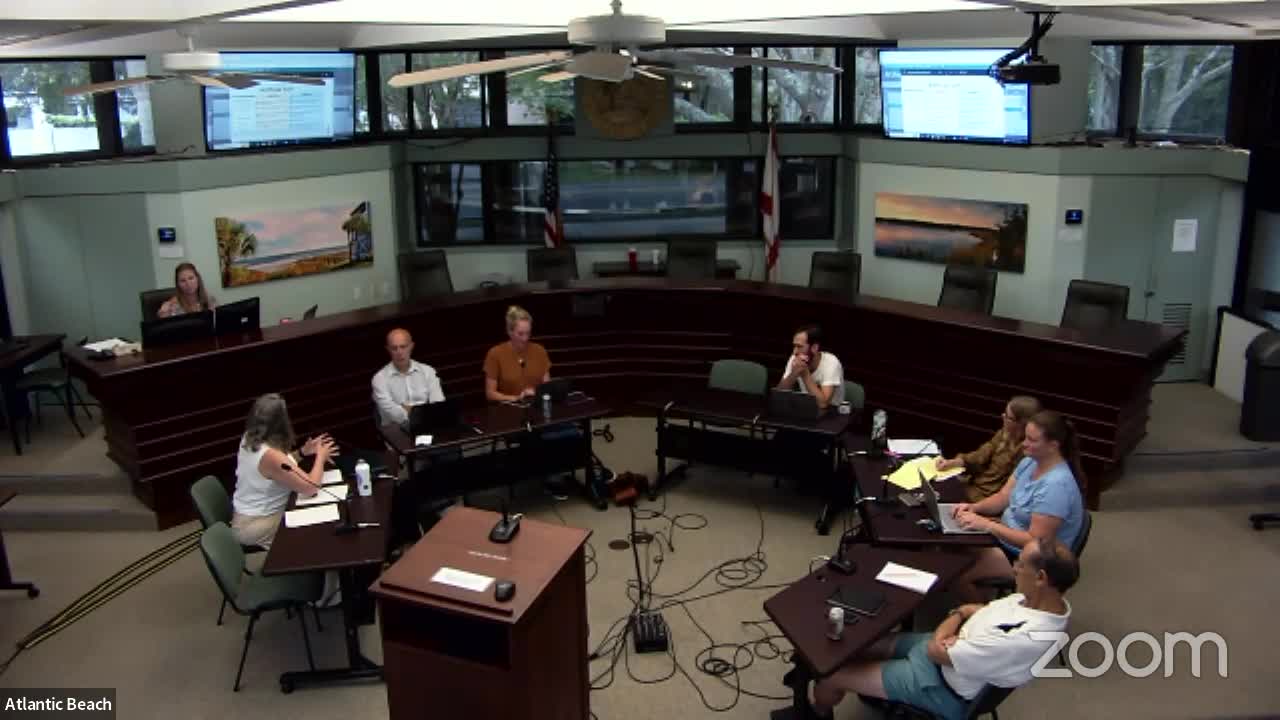Environmental group raises alarm over artificial turf dangers
August 14, 2024 | City of Atlantic Beach, Duval County, Florida
This article was created by AI summarizing key points discussed. AI makes mistakes, so for full details and context, please refer to the video of the full meeting. Please report any errors so we can fix them. Report an error »

In a recent government meeting, officials engaged in a heated discussion regarding the environmental implications of artificial turf versus natural grass. The primary focus was on whether to endorse a recommendation from the Commission Development Board (CDB) that suggests all new installations should be 100% pervious, which allows water to penetrate the surface.
Participants expressed concerns about the environmental impact of artificial turf, citing potential health risks and its effects on biodiversity. One member highlighted that while the installation of artificial turf has improved, there are significant issues related to chemical runoff and the introduction of microplastics into the environment. They referenced studies from other countries, such as Australia, that have banned artificial turf due to these concerns.
The conversation also touched on the need for a balanced perspective, emphasizing that the information provided by industry representatives may not fully capture the environmental risks associated with artificial turf. Members debated whether to formally comment on the CDB's recommendation, with some advocating for a motion to discourage the use of artificial turf altogether due to its potential health hazards and negative impact on local ecosystems.
Ultimately, the group agreed on the necessity of further review and discussion before making a definitive motion. They acknowledged the importance of considering both the benefits and drawbacks of artificial turf, particularly in relation to stormwater management and the health of local pollinators. The meeting concluded with a commitment to gather more data and insights before proceeding with any formal recommendations to the CDB.
Participants expressed concerns about the environmental impact of artificial turf, citing potential health risks and its effects on biodiversity. One member highlighted that while the installation of artificial turf has improved, there are significant issues related to chemical runoff and the introduction of microplastics into the environment. They referenced studies from other countries, such as Australia, that have banned artificial turf due to these concerns.
The conversation also touched on the need for a balanced perspective, emphasizing that the information provided by industry representatives may not fully capture the environmental risks associated with artificial turf. Members debated whether to formally comment on the CDB's recommendation, with some advocating for a motion to discourage the use of artificial turf altogether due to its potential health hazards and negative impact on local ecosystems.
Ultimately, the group agreed on the necessity of further review and discussion before making a definitive motion. They acknowledged the importance of considering both the benefits and drawbacks of artificial turf, particularly in relation to stormwater management and the health of local pollinators. The meeting concluded with a commitment to gather more data and insights before proceeding with any formal recommendations to the CDB.
View full meeting
This article is based on a recent meeting—watch the full video and explore the complete transcript for deeper insights into the discussion.
View full meeting